MAGDEBURG, GERMANY - This lovely city that sits majestically perched on the banks of the Elbe River was a lost treasure, hidden behind a “wall” and almost forgotten for over 30 years. But when the “wall” came crumbling down, beautiful Magdeburg was rediscovered, polished and its luster restored. And now Magdeburg is magical again.
The former seat of the Holy Roman Empire is just one many cities that sat behind the Berlin Wall, out of sight and out of mind to world travellers while the communists ruled the former East Germany. But since German Reunification in 1990, Magdeburg, thanks to an injection of lots of federal cash, has been returned to its glory days and the 1,200-year-old beauty has again taken its rightful place among the “must-see” tourist cities of Germany.
And once you get here, you won’t believe what you’ll see.
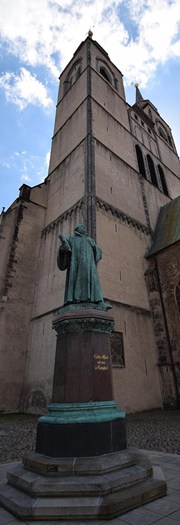
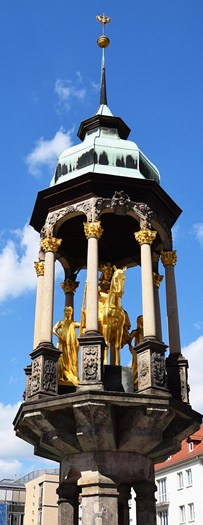
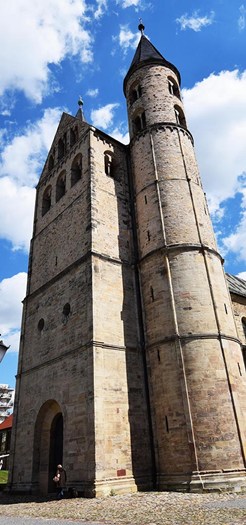
Above: Statues of Martin Luther and Otto the Great and Our Lady church.
Magdeburg certainly surprised this first-time visitor with its stunning good looks; its skyline is dominated by a grouping of ancient church towers that rivals anything I’ve seen in Rome or Paris.
Known as the “City of Otto” — Otto The Great, who ruled the Holy Roman Empire from here, and Otto von Guericke, a noted politician and scientist share favourite son status — Magdeburg is a place that now serves as capital of Saxony-Anhalt, one Germany’s 16 states, which has the highest concentration of UNESCO World Heritage Sites in the country.
The compact city of 238,380 residents is divided into four distinct tourist districts; the Cathedral and Market districts are the ones that attract the most visitors, though.
As I stroll along the Elbe en route to the Cathedral District, I’m impressed by how environmentally-friendly Magdeburg appears. It’s actually one of Germany’s greenest cities and ranks second only to Hanover in total hectares devoted to green spaces.
The Elbe is one of the most important rivers in central Europe and cuts through Magdeburg just before emptying into the North Sea. The river has brought the city great prosperity over the centuries and remains one of the continent’s major transportation routes. On its perfectly groomed banks, I see people stretched out on the grass soaking up the sun, playing cards and passionately discussing politics, something that was unheard of here during its communist era.
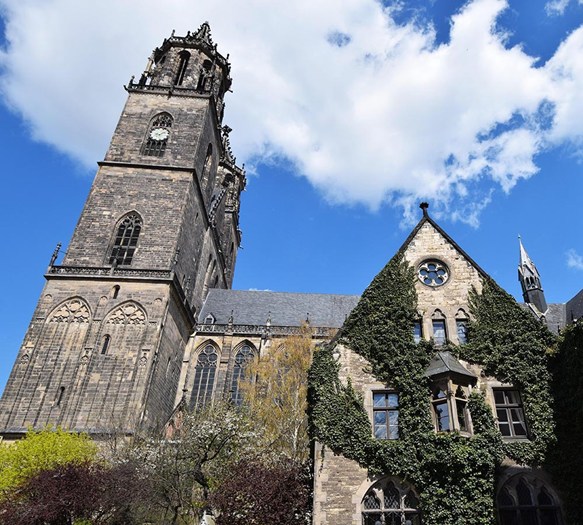
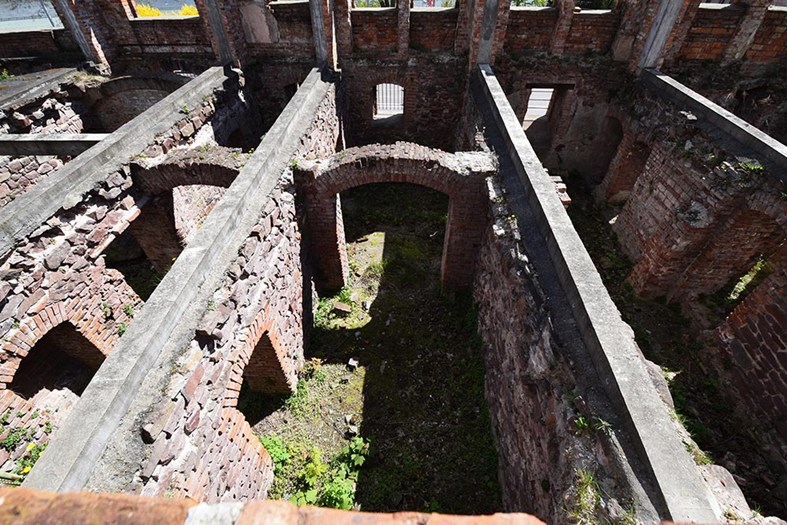
Above: Magdeburg was seat of the Holy Roman Empire and a Roman outpost.
It’s not hard finding the Cathedral District — the massive black towers of Magdeburg Cathedral, the centrepiece of the lovely area, can be seen from almost everywhere in the downtown core.
The original cathedral was commissioned by Otto The Great in 955 but he died shortly after ascending to the Holy Roman Empire throne and never saw it finished. He and his wife, however, are now entombed in the cathedral, which was destroyed in 1207 in a city fire. It took another 300 years to rebuild it and the end result is very impressive; it is one of the most beautiful Gothic structures in Europe and it’s filled with lots of priceless artifacts from the Middle Ages.
A short walk leads me to another handsome structure, the former Monastery of Our Lady, which is home to a very impressive art museum. The Monastery is the oldest surviving building from the Roman Road period in Magdeburg, dating back to the 11th century. The artwork is displayed in three vaults in the north wing of the building, which also houses the Georg Philipp Telemann Concert Hall.
Directly behind the monastery, I stumble upon the Old Möllenvogtel — circa 1600 — another ancient church, which is home to the city’s Romanesque Art Centre. When I walk through the city’s last surviving medieval gate next to Old Möllenvogtel, I discover a half-timbered house from the same period. History abounds in Magdeburg.
My next discovery is the Fürstenwall, the city’s Middle Age ruins that contain fortifications that look out on the Elbe. Two perfectly preserved watch towers are the highlight of my visit here.
Before leaving the fascinating Cathedral District, I visit the Church of St. Sebastian, which opened in 1015. While admiring the lovely Gothic structure, my eye is drawn towards something that looks out of place amongst the historic landmarks — a pink building with lots of curves and big gold balls sticking out atop its roof. It looks like something Gaudi created.
The Green Citadel, as it’s known, is actually the last creation of noted Austrian architect Friedensreich Hundertwasser, a devoted environmentalist who topped the building with a flowering meadow and incorporated 900 windows into the design to promote natural light. The Citadel prompted many opinions — both for and against — when it opened in 2005 but has since become one of the most photographed buildings in all of Europe; a novel creation that injects a bit of playful youthfulness in this staid university city.
When I get to the Alter Markt (Old Market Square), Otto von Guericke, or at least a bronze statue of the man, is there to greet me. Otto the Scientist is revered here because if his achievements in the world of physics; his discovery of an experimental method for clearly demonstrating electrostatic repulsion is his main claim to fame.
Von Guericke also served in many municipal positions while living here for 50 years, including Magdeburg’s Lord Mayor. So the handsome monument is indeed a fitting tribute to the 17th-century celebrity.
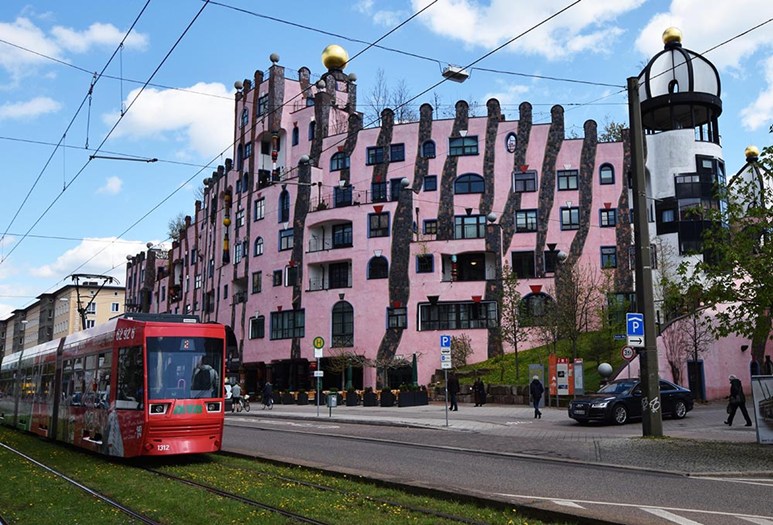
Above: The Green Citidel showcases the city's playful side.
Around the corner from Otto the Scientist, I find Otto The Great perched atop a golden horse with two golden attendants at his side guarding Magdeburg’s 12th-century Town Hall. The impressive statue, known as the Magdeburg Rider, is actually a copy of the 11th-century original, which rests safely in the city’s Cultural History Museum.
Across the street stands the impressive Walloon Church of St. Augustine, where Martin Luther once preached (1524) during the earliest days of the Reformation. A statue of the great reformer stands outside the impressive church that has been standing on the hill overlooking the Elba River since 1285.
Because there’s so many parks in Magdeburg, people are encouraged to get outdoors and the place they like to hang out most is Elbauenpark, home to the coned-shaped Millennium Tower, the highest wooden structure of its kind in the world — think giant teepee — where 6,000 years of human history are retraced through some fascinating exhibits and artifacts.
Magdeburg’s entertaining Butterfly House can also be found at Elbauenpark and it keeps kids and those young at heart entertained for hours. The park’s summer toboggan run is another family favourite.
The cycle route along the Elbe is always crowded with locals and visitors alike, and offers the best views of Magdeburg’s historic districts.
As you might expect in a city that drifts off into one of Europe’s famous rivers, there’s plenty of boating activities available in Magdeburg and river cruises must be booked early in the summer months to avoid disappointment.
This is a city of surprises and there’s no better proof of that than Magdeburg Zoo, where 1,200 exotic animals, representing 190 different species, roam freely over 16 acres of idyllic terrain in Vogelgesang Park. The zoo is one of the best in the world and its savannah landscape will make you think you’ve arrived in Africa.
The zoo’s chimpanzee enclosure and its elephant and penguin presentations are truly remarkable. Kids love the zoo’s “Up Close” program, where they can hold and touch some treasured animals.
The zoo certainly brings a smile to everyone’s face, just like all of magical Magdeburg.
Information
The best way to get to Magdeburg from Canada is with Lufthansa via Frankfurt or Berlin. Air Canada also offers daily service to Frankfurt. / Magdeburg is an hour’s train ride from Berlin. / Magdeburg, like many other cities in Germany, are getting ready for the 500th anniversary of the Reformation in 2017. Magdeburg is in close proximity to cities and towns that played key roles in Martin Luther’s peaceful 14th century rebellion against the Catholic churcH. The Maritim Hotel Magdeburg (www.maritim.com) is offering special Reformation packages throughout 2017. / For more information on Magdeburg, go to www.magdeburg-tourist.de / For information on Germany, go to www.germany.com